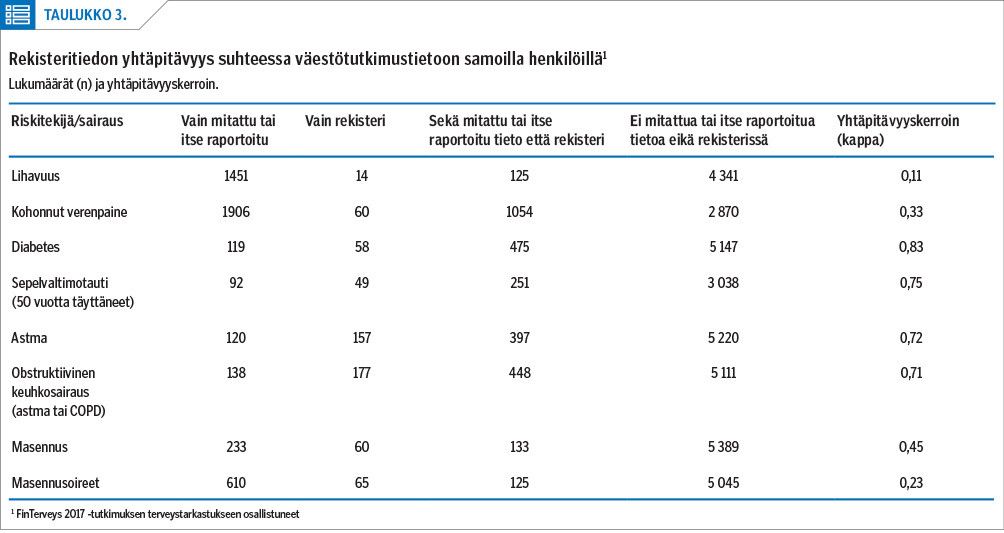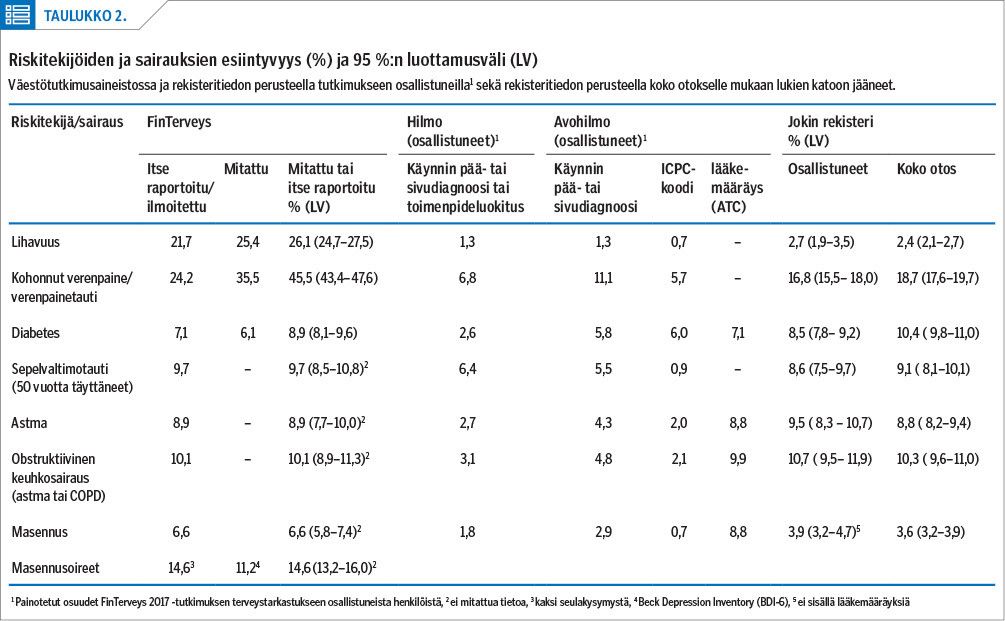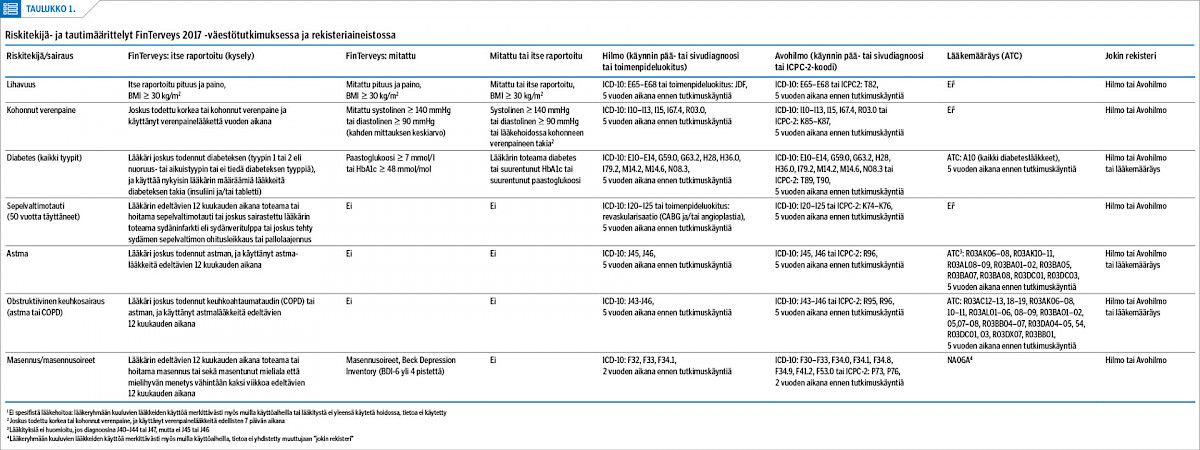Monitoring, assessment and prediction of public health: What type of information can be obtained in Finland from care registers and what from population studies?

Background In future it will be important to improve the utilization of register information in monitoring the health and wellbeing of the population. However, this requires an understanding of the validity of register information for assessing the prevalence of diseases and risk factors.
Methods We compared survey information with information retrieved from the Care Register for Health Care for those individuals who participated in the FinHealth 2017 Study. The prevalence of type 2 diabetes, coronary heart disease, asthma, COPD and depression as well as elevated blood pressure and obesity was assessed.
Results The prevalences of diabetes, coronary heart disease, asthma and COPD were very similar regardless of the data source. Kappa coefficients varied between 0.71–0.83. Depression was less prevalent based on register data compared with survey data. Register data did not provide reliable information on elevated blood pressure or obesity.
Conclusions Estimates on disease prevalence based on survey data and the Care Register for Health Care data are quite similar when analyzing diseases regularly followed-up in health services and needing continuous treatment. Registers are unreliable in assessing health risks.
















